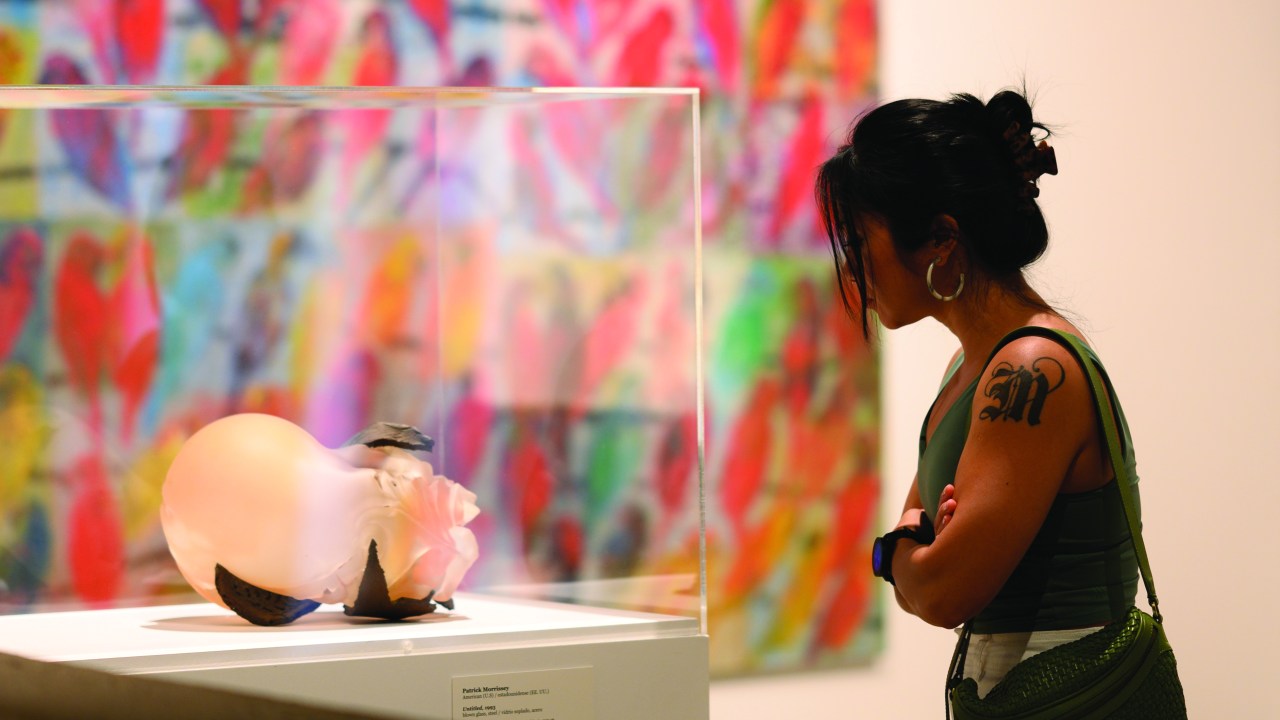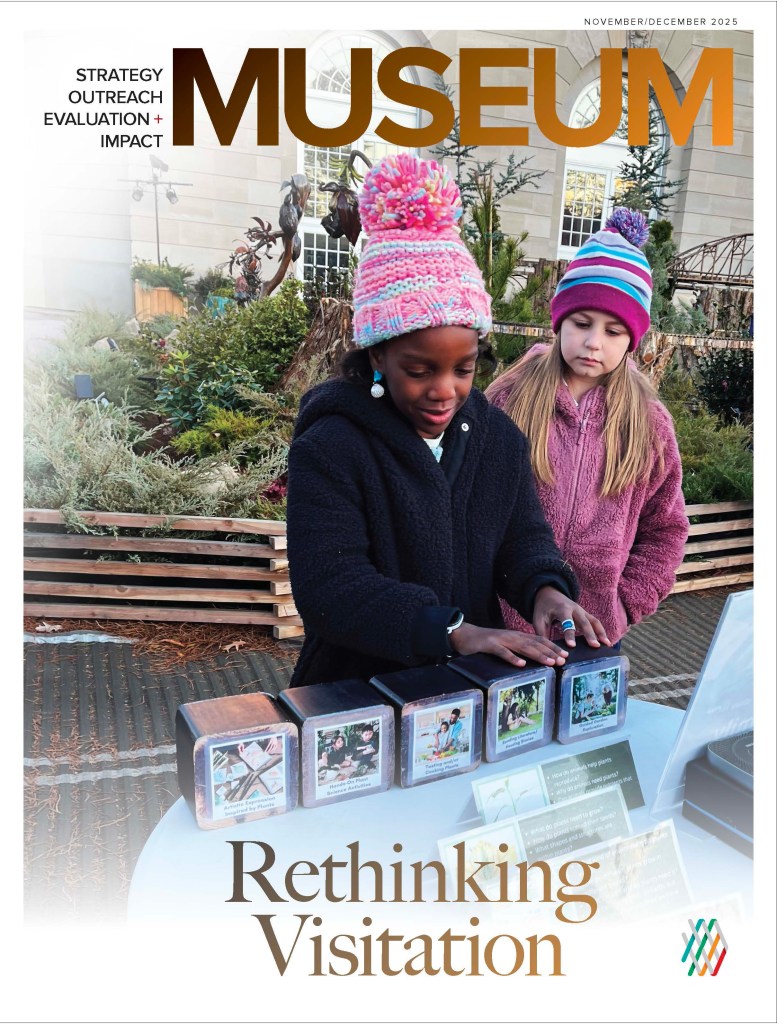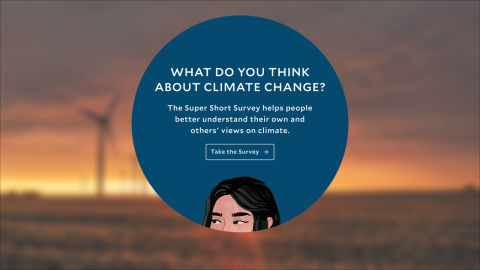
Tucson Museum of Art and Historic Block has taken a community-based approach to programming that is increasing audience engagement and visitation.
To build sustainable and relevant institutions in the 21st century and beyond, museums must rethink visitation as more than just admissions, reframing their practices to center engagement and enhance audience participation. Here, “engagement” refers to sustained commitment measured by long-term impact. Often, this requires museums to be adaptable as relationships mature. Community-based curation and related strategies, when aligned with mission, community relevance, and impact, help build a sustainable and relevant museum while improving on-site visitation metrics.
This article originally appeared in the Nov/Dec 2025 issue of Museum magazine, a benefit of AAM membership.
» Read Museum.
Community-based curation is a systemic, collaborative framework for developing exhibitions. Community curators work with museum staff to develop new and expanded understandings of artworks in ways that reflect their experiences and unique areas of expertise. This practice is rooted in a belief that open-ended conversations with community members enable institutions to better serve their constituents and care for collections.
Since 2019, Tucson Museum of Art and Historic Block (TMA), an art museum located in Southern Arizona 60 miles north of the US–Mexico border, has been iteratively refining approaches and strategies for community-based curation. Fundamental to this practice are the following:
- Evolving continually as more ideas, understandings, and references are taken into consideration
- Broadening perspectives to reveal overlooked insights or previously unknown contexts
- Building connections between the museum and its communities by reflecting their cultures, heritages, histories, and experiences
By expanding these practices beyond exhibition development and into other museum operations, TMA has harnessed the power of relationships to broaden and increase visitation. Our visitation metrics track on-campus engagement—how stakeholders experience and connect with museum exhibitions, collections, and programs. This data includes daily admissions, public programs, partnerships with local schools and nonprofits, museum events, and tours.
However, drawing on lessons learned from our community-based curatorial efforts, we have identified research methods and visitation metrics that are multifaceted—blending quantitative and qualitative data—to better identify current and potential audiences, understand their interests, and underscore the significance of the organization’s mission.
TMA is not alone in these efforts to center collaboration and communities in rethinking visitation—and, by extension, the ways in which museums form relationships with their current and potential audiences. Alongside this case study, colleagues at the Clyfford Still Museum in Denver, Colorado, and the Milwaukee Art Museum in Wisconsin share how they are also expanding community-centered engagement practices. Though this information comes from art museums, the strategies and approaches are adaptable to a variety of organizations.
Understanding Our Community
Through a mixed-methods approach—conversations, focus groups, and outreach efforts—TMA has sought to understand community perceptions of the museum. Many of these strategies focus on collaborations with stakeholders, such as cultural workers, educators, artists and creatives, nonprofit professionals, museum volunteers, and students, as well as partners, including schools, local organizations, and cultural organizations. This approach helps us reach potential audiences who have not visited or engaged with the museum in the past by:
- activating and including multiple voices;
- making space for dialogue between audiences (current and potential) and museum staff; and
- embedding collaborative practice into our day-to-day activities.
TMA creates opportunities to listen, collect feedback, and adapt our practices. For example, we have used artworks to spark conversations that explore the nuance and complexity of different collection areas while reflecting TMA’s local context. Together, this intersectional approach and regional lens have enabled us to focus on the communities we aim to serve and evolve how we care for—and activate—our collection. We have also explored more interdisciplinary programming related to food heritage, the legacy of urban planning, regional history, and the breadth of local demographics with interpretative and exhibition planning—topics that continuously emerge as important to Tucsonans and residents of Southern Arizona.

Similarly, the Milwaukee Art Museum (MAM) is focusing on audience-centered storytelling. “These efforts are rooted in a transformational approach to building interpretation rather than a transactional approach,” says Kantara Souffrant, Senior Director of Community Dialogue and Adult Programs at the MAM. “In other words, we’re working together to co-create with community members (individuals who the museum does not employ).” Listening then becomes a powerful tool for building relationships and embedding the museum in communities. The Clyfford Still Museum is also reframing engagement by “prioritizing community collaboration and co-creation over simply increasing visitor or program participant numbers,” says Nicole Cromartie, the museum’s Director of Learning and Engagement.
As TMA enters its second century of serving communities of Southern Arizona and beyond, our varied collections, interpretative programs, and exhibitions exemplify the museum’s regionality, reflecting multiple perspectives, histories, and cultural intersections as well as highlighting global influences and ideas. This work is bolstered by our mission to connect art to life through meaningful and engaging experiences that inspire discovery, spark creativity, and promote cultural understanding.
Anne Breckenridge Barrett, TMA’s Jon and Linda Ender Director and CEO, emphasizes that the interplay between mission alignment, strategies for centering communities, and reframing engagement methods is key to long-term sustainability and visitation metrics. “To include communities as an institutional priority is to commit to mutual relationships—creating conditions for genuine partnerships and collaboration across all areas of the TMA,” Barrett says. “It means connecting with people whose ideas, creativity, and stories continually help shape and evolve who we are as a museum. Such an approach fosters reciprocal investment: the TMA investing in its communities and the communities investing in the museum.”
To be responsive to today’s audiences, TMA considers the overlaps and implications between histories, communities, and place and how they can inform exhibitions, operations, and the ways in which the museum enacts its mission. Sustained conversations—in the form of focus groups, convenings, and one-on-one meetings—with communities have led to answers about the overlap between our collections and the histories and lived experiences of our constituents. They also illuminated ways in which TMA could actively “connect art to life” within its exhibitions.
This work includes gallery interpretation written from multiple perspectives; drawing connections between an artwork and an individual’s lived experience or professional practice; and exploring opportunities for loans, acquisitions, or artist commissions to expand the stories told within TMA’s galleries. We also discovered ways to enact our mission within public programming, making the museum a convening space to spotlight small businesses and community organizations, to deepen engagement with works of art on view.
By opening exhibitions and interpretation to multiple histories, experiences, and ways of knowing, we forged new directions for participation and transformation as well as more expansive networks throughout Southern Arizona. For example, through conversations, we learned that TMA is an important space of connection where visitors can:
- discover the overlap between art and community and encounter a blending of creativity, culture, and history;
- experience the museum as a forum where people come together to engage in conversation and co-exist; and
- see themselves, their experiences, and perspectives reflected in a work of art.
Using Data to Understand Engagement
As we increased our capacity to engage in narrative analysis to better understand audience engagement with TMA, we began to cross-reference this with quantitative data to gain a fuller picture of audience engagement. We wanted to explore two questions: 1) How do qualitative findings reflect quantitative metrics? and 2) Can a community-centered approach correlate with increased participation?
We have therefore sought ways to explore visitation metrics alongside narrative data—practices that the Clyfford Still Museum is also testing. Cromartie is seeking “new methodological visions for telling stories about learning.” This means that she is actively working to amplify the power of storytelling in metrics—expanding what types of data are used to communicate impacts of programming. “Stories can be powerful tools for understanding impact and success,” she says. “By framing impact as relational, reflective, and experiential, process evaluations and meta-synthesis offer a more robust and holistic account of programs than any single numerical metric could capture.”
At TMA, a mixed-methods approach enabled us to identify various data sets that could offer insights on our visitation and identify audience participation trends and potential new users. As a result, we sought to blend three main sources of data.
- Visitor home ZIP code data by quarter
- Participation analytics such as admissions reports by quarter, day of the week, and
price type - Qualitative data from interviews and focus groups
First, we found that visitation did not significantly change by season, varying at most by 11 percent between peak times (January–March) and slower months (July–September). We also learned that over 50 percent of visitors were from Pima County, where the museum is located, and over 70 percent were Arizona residents. In fact, 66 percent of visitors were from Southern Arizona (within a 100-mile radius of the museum).
This reinforces the TMA’s identity as a regional, community-centered art museum. Echoing this, visitors have told us that a connection to Tucson and Southern Arizona is important to them. People appreciated seeing themselves, their homes, and their cultures reflected in the art at TMA, and representations of Southern Arizona attracted visitors and supporters alike. This priority was clear throughout our focus groups, interviews, and visitor data.
MAM is also focusing on attracting regional and local visitors. It is amplifying the connection between the museum and Milwaukee residents with a new marketing message and communication strategy, which “aims to strengthen the emotional connection to the museum, build awareness, and highlight the relevance of all that MAM has to offer at any given moment,” Souffrant says.
As part of this work, TMA also took a long-term look at visitation. Comparing on-campus visitation from the 2018–2019 season—when we began to implement collaborative practices and community-based curatorial strategies—to the 2024–2025 season, the museum saw a 4 percent increase in total on-campus engagement and a 13 percent increase in paid admissions. Of course, at the peak of the COVID-19 pandemic, the museum saw a sharp decline in attendance and visitation—an approximately 58 percent drop. However, TMA has been extremely effective in rebuilding visitation to above pre-pandemic levels: from 2020–2021 to 2024–2025, on-campus engagement increased 149 percent.

Armed with this data, we can conclude that centering engagement and community as a strategy can significantly boost visitor metrics. TMA has accomplished this by committing to relationship-building and shared stewardship of works of art in the museum’s care to build a more relevant and locally embedded institution. Community engagement is a dynamic, relational, and fluid process that enables institutions to discover new ways of understanding—and strengthening—visitation while fulfilling their missions in relevant and sustainable ways.
Acknowledgments: Thanks to Kantara Souffrant and Nicole Cromartie for sharing their reflections and expertise on community relevance, engagement, and visitation.
Marianna Pegno is the Director of Engagement and Inclusion at the Tucson Museum of Art and Historic Block where she focuses on building a culturally relevant, community-based institution through programs, exhibitions, and partnerships.








